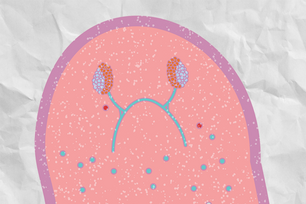Peter W. Reddien
The Reddien Lab studies the cellular and molecular basis for regeneration.
455 Main Street
Cambridge, MA 02142
United States
Achievements & Honors
Research Areas
Affiliations
Question
How do regenerative organisms regrow parts of their bodies?
Approach
The regenerative powers of organisms throughout the animal kingdom have captured the imagination of biologists for centuries. Whitehead Member Peter W. Reddien studies the molecular and cellular basis for regeneration in multiple regenerative organisms. Much research in the Reddien lab focuses on study of regeneration in flatworms called planarians. Reddien led the first large-scale study of gene function in planarians, discovering many genes needed for regeneration. New tissues and organs in planarian regeneration are produced by neoblasts—adult stem cells that share certain characteristics with embryonic stem cells and can differentiate into essentially all cells found in adult animals. A similar process occurs in normal uninjured adult planarians, in which neoblast progeny cells continually replace aged cells.
Reddien's lab has found that some neoblasts are pluripotent stem cells, providing the cellular basis for new tissue production in planarian regeneration. They also discovered that extensive specialization of neoblasts occurs, generating progenitors for the diverse cell types of the body. Work on neoblasts informs how stem cells are regulated in the context of injury and tissue maintenance, and has identified roles for many conserved molecules.
Reddien's lab has also identified positional information that is required for animals to regenerate the correct tissues, and proposes that such information (in the form of position control genes) constitutes a coordinate system that instructs the biology of stem cells. Inhibition of position control genes, including those associated with Wnt signaling, can result in dramatic regeneration abnormalities, such as the formation of a head instead of a tail. Unexpectedly, the Reddien lab found that this positional information is harbored primarily in one tissue: muscle. The Reddien lab studies the signals that come from muscle to guide regeneration and how regenerative progenitors respond to extrinsic cues to form new organs and tissues.
Bio
Reddien became a Whitehead Member and joined the MIT faculty in 2005. He is now Professor of Biology and Associate Head of the MIT Department of Biology. He completed his undergraduate studies in molecular biology at the University of Texas at Austin, then obtained his PhD in biology from MIT in Robert Horvitz’s lab, followed by postdoctoral work with Alejandro Sanchez Alvarado (now at the Stowers Institute).


